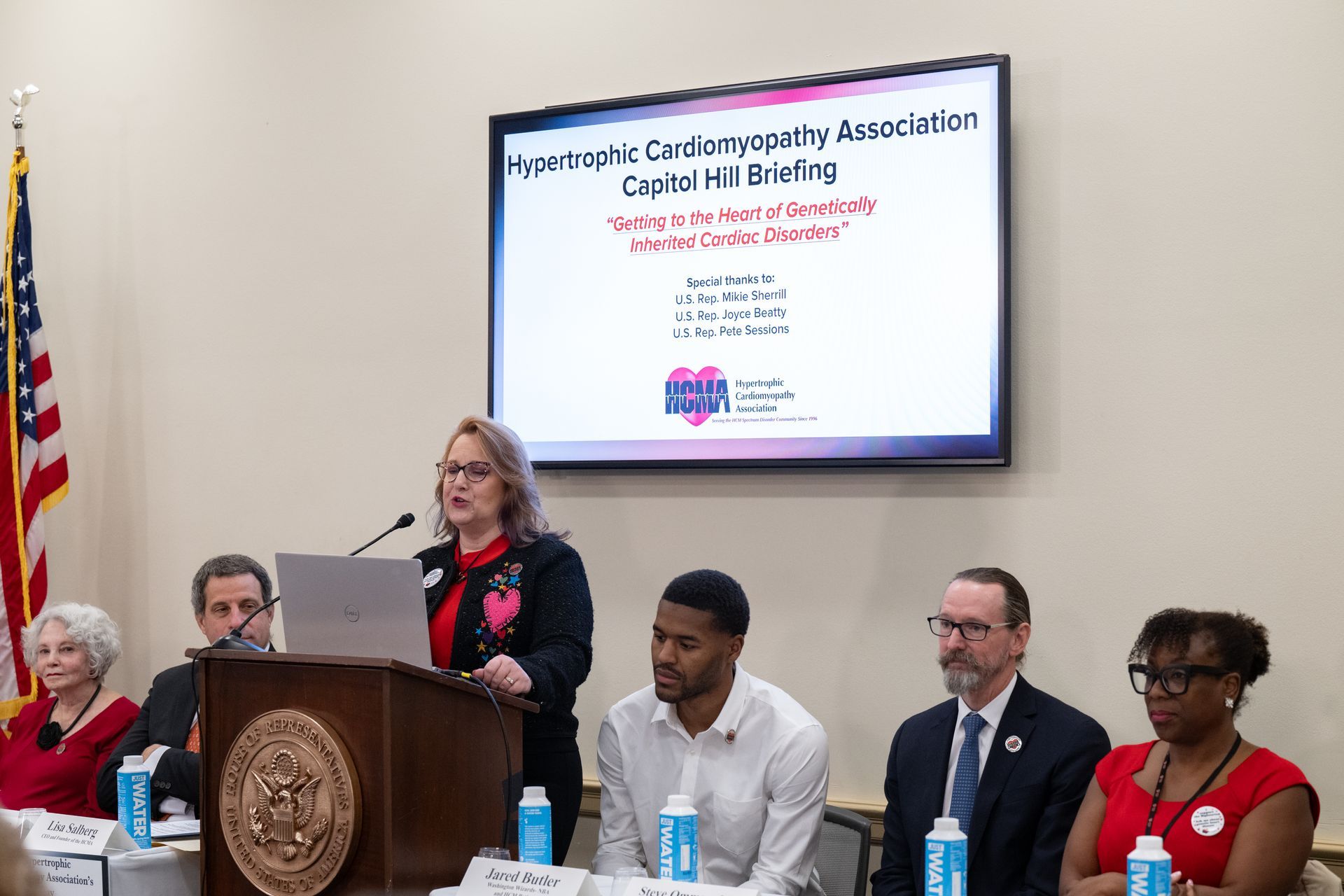Complications of HCM
In some cases a number of specific complications can occur:
Based on data collected through the Center for Disease Control and Prevention in 2018 in the United States 1,801 people died with HCM as a primary cause of death, 107 were under the age of 24 years.
Arrhythmias
Arrhythmias, irregularities of the heartbeat, are common complications in HCM. Symptoms such as palpitation may occur. Exercise testing or Holter monitoring may detect arrhythmias. The arrhythmia called ventricular tachycardia (arising from the ventricles) or atrial fibrillation (described below) are particularly important and require treatment. In atrial fibrillation, the normal regular rhythm of the heartbeat is lost and replaced by an irregular rhythm which may be episodic or persistent. The loss of normal atrial (the top of the heart) contraction produces a risk of clot formation in the atria. Anticoagulants and drugs to slow the heart rate are required. Ventricular tachycardia can lead to ventricular fibrillation, which is fatal if not treated immediately.
Sudden Cardiac Arrest
HCM can increase the risk of premature death due to sudden cardiac arrest (SCA). As its name implies, SCA can occur with little or no warning. SCA can occur at any age. In the past, the risk of sudden cardiac arrest was thought to be much higher than we now know it to be. Current estimates are that the risk of sudden cardiac arrest is between 1 and 2% per year in the HCM population. Some people with HCM are at a higher risk for SCA, and some are at a lower risk. Those at higher risk are advised to consult with their HCM specialist about receiving an implantable defibrillator.
Heart Failure
Heart failure (HF) means that blood is not coming from the heart fast enough to meet the body's needs. There are two general ways this can happen: the heart may not pump hard enough, or it may not fill well enough. Problems with pumping (systolic heart failure) are probably more common in the populace as a whole, but problems with filling (diastolic heart failure) are much more common among HCM patients. Both of these can be treated quite successfully, but successful treatment requires paying attention to HF early, and following the treatment protocols closely. Many people have episodes of heart failure but continue to live long and reasonably normal lives.
"Burnt out" or "End Stage" HCM
Many HCM patients, when they hear about this part of the HCM disease process, are frightened or depressed. The names themselves are frightening! But the first thing to know is that "end-stage" is misleading as a name: most HCM patients never experience this part of the disease. Presently it appears that about 3% of all HCM patients reach this point. It is not well understood why some people reach end-stage HCM.
End-stage is similar in many ways to a disease called dilated cardiomyopathy (DCM), although DCM is a distinctly different disease and is treated differently than HCM. The heart reaches a point of generalized weakening and thinning of the muscle walls with dilated chambers, particularly the left ventricle. While the walls may have been thickened from overwork caused by muscle tissue that contracts too readily, previously "thick" muscle now becomes thinned because of its weakened state. The heart chambers become enlarged (dilated). This weakening and dilation of the heart muscle eventually leads to heart failure. The ejection fraction drops below 45% and in some cases down to the teens. Some of these patients may move on to heart transplantation.
Heart Block
The normal electrical signal may travel down to the ventricles slowly or may be partly or completely blocked. These are all called heart block. Certain kinds of heart block (left or right bundle branch block) are harmless by themselves, but some other kinds require a pacemaker.
Endocarditis
Endocarditis is an infection of the heart which occurs rarely in hypertrophic cardiomyopathy. Bacteria in the bloodstream can attach to the inside of the heart, especially because blood flow in HCM hearts is often turbulent. **As uncommon as this is, the Founder of the HCMA fell victim to this. The HCMA advises extreme caution when undergoing any invasive medical procedure. The possibility of contracting endocarditis is the reason that many HCM specialists recommend taking prophylactic antibiotics before all dental work.**
Citations:
Maron, B.J. and Salberg, L. Hypertrophic Cardiomyopathy: For patients, their families and interested physicians. Blackwell Futura: 1st edition 2001,81 pages; 2nd edition 2006, 113 pages; 3rd edition pending publication 2014
Gersh, B.J., Maron, B.J., Bonow, R.O., Dearani, J.A., Fifer, M.A., Link, M.S., et al. (2011). 2011 ACCF/AHA guidelines for the diagnosis and treatment of hypertrophic cardiomyopathy. A report of the American College of Cardiology Foundation/American Heart Association Task Force on practice guidelines. Journal of the American College of Cardiology and Circulation, 58, e212-260.
Completed:
- G. A. Fox, 31 March 2021

 Translate
Translate